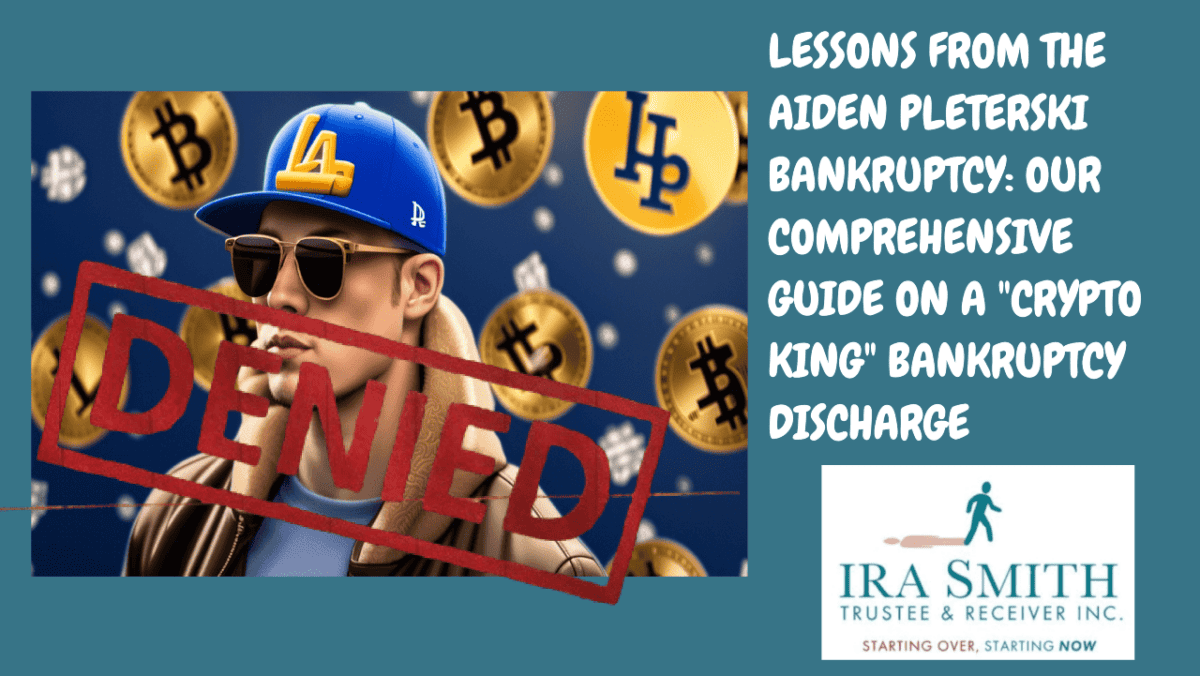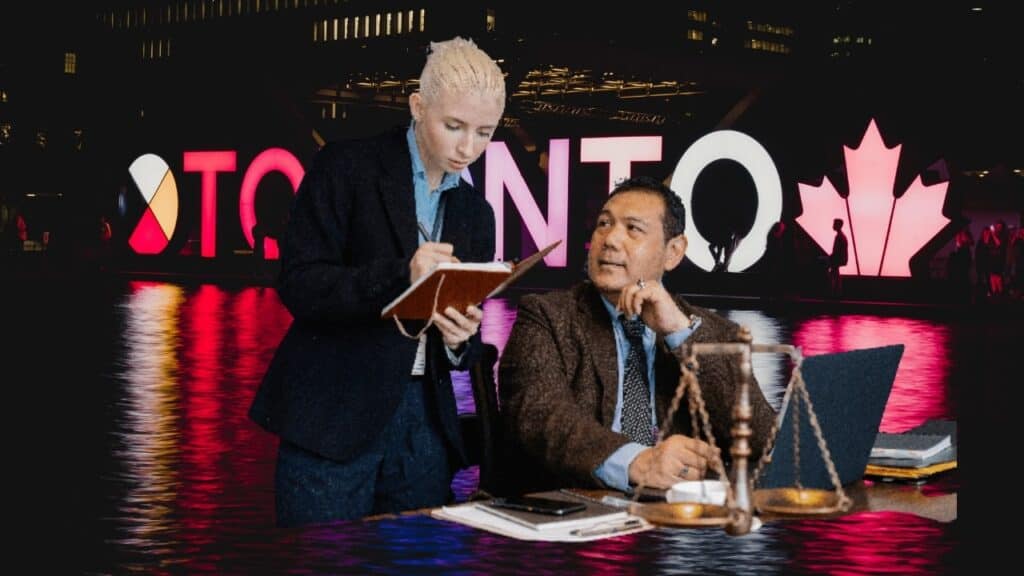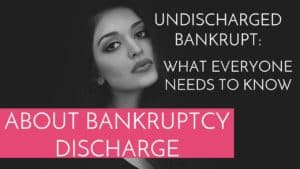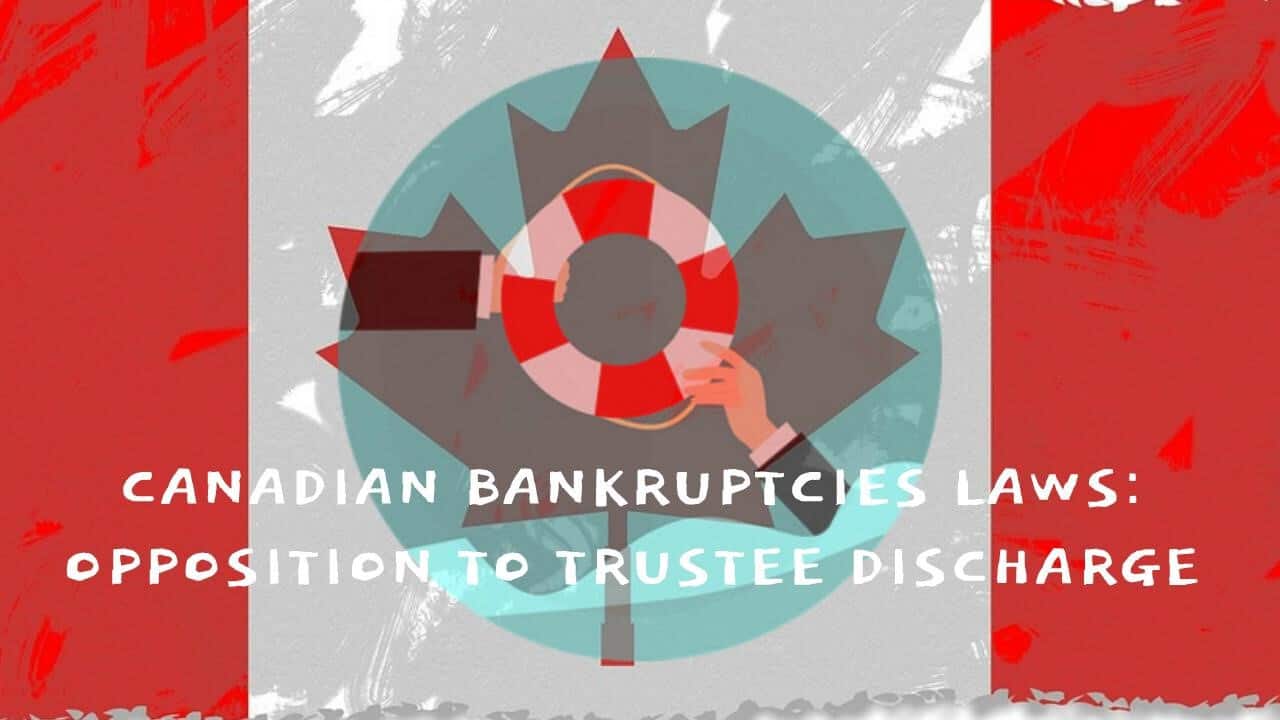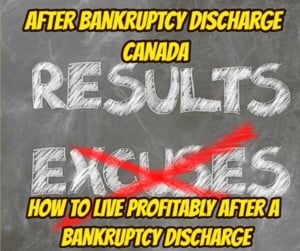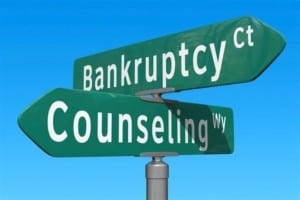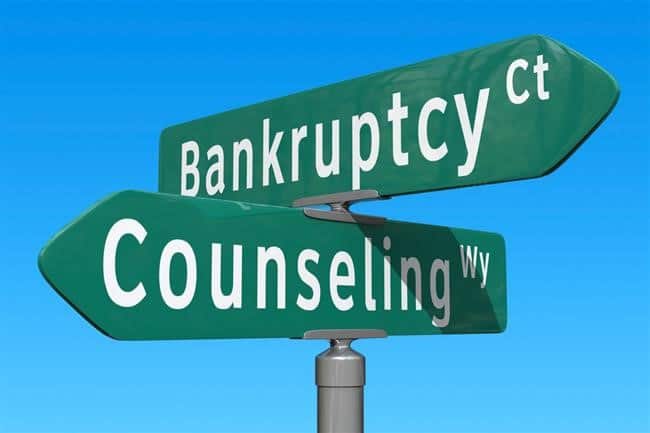Background of Aiden Pleterski: The Rise and Fall of the ‘Crypto King’
Aiden Pleterski is embroiled in legal battles over alleged fraud and financial misconduct, shedding light on his extravagant lifestyle and controversial business dealings. We embark on a journey through the tumultuous life of Aiden Pleterski, a young entrepreneur who rose to fame as the self-proclaimed ‘Crypto King’ only to face allegations of fraud and deception. The details of his lavish lifestyle, questionable business practices, his legal troubles and his bankruptcy that have ensnared him have been widely reported.
On August 9, 2022, following an application by specific investors, the Ontario Superior Court of Justice (in Bankruptcy and Insolvency) issued a ruling declaring Aiden Pleterski and his company, AP Private Equity Limited, as bankrupt and naming Grant Thornton Limited, the accounting firm appointed as the licensed insolvency trustee to handle these bankruptcy cases. Subsequently, there have been instances where Mr. Pleterski has shown reluctance in cooperating with the licensed insolvency trustee responsible for overseeing the bankruptcy proceedings.
In every personal bankruptcy, the bankrupt is entitled ultimately to a discharge from bankruptcy. If there are no legal, compliance or other issues that have caused one or more of the Trustee, the Office of the Superintendent of Bankruptcy (OSB), or any of the unsecured creditors to oppose the bankrupt’s discharge, then the Trustee can issue an automatic discharge certificate. However, if there is opposition to a person’s discharge from bankruptcy, as is the case for Aiden Pleterski, then a bankruptcy discharge hearing must be held in bankruptcy court.
In this Brandon’s Blog, I look at the bankruptcy discharge process and the reasons for opposition to Aiden receiving an absolute discharge from bankruptcy.
The Allegations against Aiden Pleterski
As Ontario’s so-called ‘Crypto King’ Aiden Pleterski’s financial empire unravelled, a web of deceit, luxury, and legal battles came to light. The allegations against this once high-flying entrepreneur paint a picture of fraud, extravagant spending, and a lifestyle built on deception.
Accusations of Defrauding Investors
Between May 2020 and August 9, 2022, the bankrupt was involved in an investment scheme soliciting funds from thousands of people. One of the ways he solicited funds was by email to investors. He claimed to invest these funds in cryptocurrency and foreign exchange positions on behalf of the investors.
On July 7, 2022, a group of Aiden’s investors, with the help of a fraud recovery lawyer, obtained a worldwide Mareva injunction against both Pleterski and his company following allegations of fraudulent misrepresentation, civil fraud, misappropriation of funds, conversion, and unjust enrichment. The investors have been trying to track down what has happened to the $40-million Pleterski was given for investment by the investors. Subsequently, the bankruptcies were filed shortly after the injunction was granted.
One of the most damning accusations levelled against the ‘Crypto King’ is the defrauding of investors to the tune of millions. Through false promises of lucrative cryptocurrency investments, Aiden Pleterski allegedly lured unsuspecting individuals into entrusting him with their hard-earned money. Instead of using these funds for their intended purpose, he is said to have diverted a significant portion towards personal gain, leaving investors in financial ruin.
Revelations of Extravagant Spending and Running A Bit Of A Ponzi Scheme
While investors were led to believe their money was being wisely invested in the volatile world of cryptocurrency, revelations have emerged of Pleterski’s penchant for extravagant spending in the form of luxury purchases. Sports cars, houses for friends and family, and other high-end goods reportedly consumed a substantial portion of the funds he received. This painted a stark contrast to the promises made to investors. The reality was quite different since he surrounded himself with the trappings to look like a successful investor savvy in all financial matters.
The Trustee estimates that only 1.6% of the funds collected from the investors were invested. The Trustee’s analysis also demonstrated that Aiden Pleterski used money from new investors to pay out old investors. It further shows that for 2.5 + years, Pleterski spent approximately 38% of the total amount collected from investors to fund his expensive lifestyle, including renting a mansion in Burlington, expensive vacations, and an exotic car collection. The Trustee also confirmed that these findings were consistent with evidence Aiden Pleterski provided during an examination in bankruptcy proceedings under the Bankruptcy and Insolvency Act (R.S.C., 1985, c. B-3) (BIA).
Charges of Fraud and Money Laundering
Law enforcement agencies have not turned a blind eye to these alleged financial misdeeds. Charges of fraud and money laundering have been brought against the ‘Crypto King,’ signalling the gravity of the situation. As legal battles unfold, Pleterski finds himself at the center of a storm of allegations, with the full weight of the law bearing down on him.
As reported on CP24 BREAKING NEWS in Toronto and other news outlets, Hannah Alberga of CTV News Toronto obtained Court documents showing that a warrant was issued for Aiden Pleterski on May 2, 2024. On May 14, 2024, Pleterski was arrested under an arrest warrant and charged with one count of fraud exceeding $5,000 and money laundering under the Criminal Code of Canada, R.S.C., 1985, c. C-46 following a 16-month investigation by the Durham Regional Police and the Ontario Securities Commission.
That same day, Pleterski was released on bail under this large-scale fraud prosecution. His bail conditions required him to surrender his passport, avoid contacting investors, abstain from making any social media posts related to financial matters such as investments, and refrain from purchasing or trading cryptocurrencies.
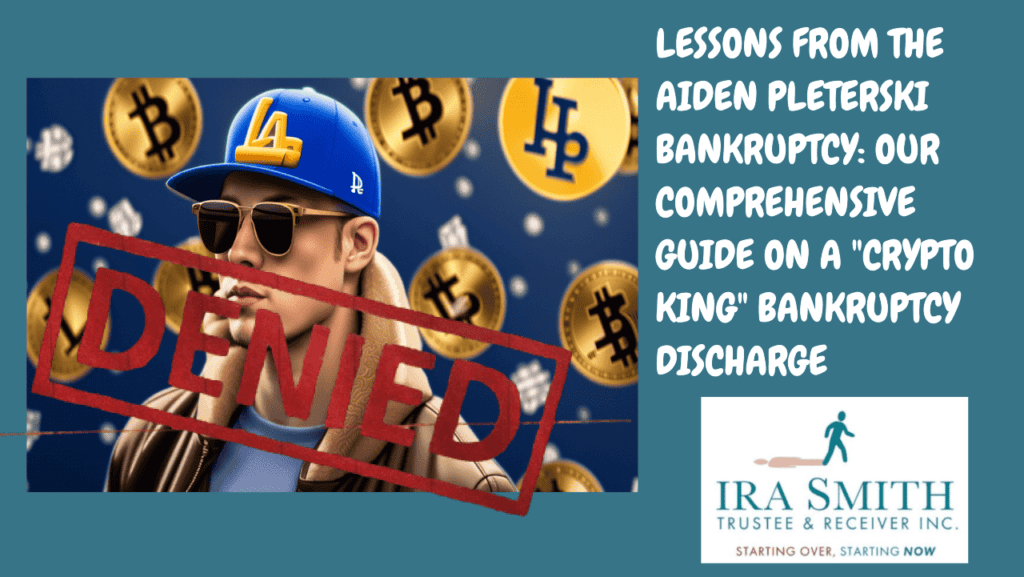
On May 16, 2024, Durham Regional Police and the Ontario Securities Commission held a news conference in Durham Region to advise of the investigation, arrest and charges laid against Aiden Pleterski and an associate of his, Colin Murphy.
The Lavish Lifestyle of Aiden Pleterski
Pleterski withdrew crypto currency totalling USD 2,734,506
One cannot ignore the allure of Aiden’s lifestyle, filled with sports cars gleaming under the sun, exotic vacations to far-flung destinations, and a collection of high-end goods that rival those of royalty. His penchant for the finer things in life is evident in every aspect of his existence, from the lavish parties he hosts to the exclusive brands he associates himself with.
Despite the shadow of fraud allegations hanging over him, Aiden’s social media presence paints a picture of a man unfazed by legal turmoil. His posts exude a confidence that belies the financial misconduct he is accused of, showcasing a life of excess and indulgence that seems untouched by the harsh realities of legal battles.
What sets Aiden apart is not just his extravagant personal lifestyle but also his involvement in high-end businesses and his relationships with luxury brands. He moves in circles where money flows like water, rubbing shoulders with the elite and forging partnerships that elevate his status even further.
It’s a world where the line between reality and illusion blurs, where the trappings of wealth mask the turmoil beneath the surface. Aiden’s story is a cautionary tale of how easily one can be seduced by the allure of luxury, only to find themselves entangled in a web of deceit and legal challenges.
Aiden Pleterski: Bankruptcy Discharge Options
There are different kinds of discharges from the bankruptcy process. This discussion is for educational purposes only, as I don’t think Aiden Pleterski is not receiving one any time soon.
For the honest but unfortunate debtor, the range of bankruptcy discharges available are:
- Absolute discharge: you are entitled to an immediate discharge;
- Conditional discharge: you can obtain a discharge after fulfilling one or more conditions;
- Suspension of discharge from bankruptcy – a suspended discharge from bankruptcy means that the discharge will occur at a later date set by the court, and will be combined with either an absolute bankruptcy discharge or conditional bankruptcy discharge;
- Refused discharge – the court can refuse the bankrupt’s discharge due to unsatisfactory fulfillment of duties and lack of response to the Trustee’s inquiries; or
- “no order” – the Trustee has advised the court that, despite the passage of time, the bankrupt has not fulfilled all of his or her duties, has failed to respond to the Trustee’s requests, and the Trustee wishes to seek its discharge.
The bankrupt’s discharge occurs when the bankrupt person has fulfilled all of their duties and any conditions set by the court as a result of a successful opposition.

The duration of a person’s bankruptcy depends on all of the above factors. Now for a discussion on Aiden Pleterski’s application for discharge from bankruptcy.
Aiden Pleterski: Legal Battles and Ongoing Investigations
The ongoing investigations have revealed a web of deceit, uncooperative behaviour, and attempts to conceal assets that paint a troubling picture of financial misconduct.
Bankruptcy Proceedings and Trustee Opposition to Discharge
The heart of the legal saga lies in the bankruptcy proceedings against Aiden Pleterski. The Trustee and the OSB have both issued Notices of Intended Opposition to Discharge under section 168.2(1) of the BIA. They cited his lack of cooperation and failure to disclose crucial financial information. Pleterski’s refusal to comply with the requirements has raised red flags, leading to a contentious battle in the courtroom.
Uncooperative Behaviour and Attempts to Conceal Assets
Despite increasing pressure, Pleterski has maintained a non-cooperative stance, with the Trustee discovering his attempts to conceal assets through various methods. From utilizing loyalty points to virtual worlds, Pleterski’s elaborate deception has complicated the task of untangling his financial matters.
As per bankruptcy documents submitted in court on behalf of the Trustee, including the Trustee’s bankruptcy report, the Trustee advised the court:
- The bankrupt’s persistent non-compliance and lack of cooperation with the Trustee throughout the bankruptcy proceedings have been extensively recorded. The Trustee has had to pursue a contempt order against Aiden Pleterski on two occasions due to his conduct, leading to unnecessary administrative costs for the bankruptcy estate.
- Throughout the bankruptcy process, he has consistently neglected his statutory obligations under the BIA. This encompassed a failure to disclose assets and provide crucial information to the Trustee that would aid in the realization of the individual’s assets.
- Throughout the bankruptcy proceedings, the bankrupt consistently neglected to meet his legal obligations as outlined in the BIA. These obligations encompassed the omission of disclosing assets and essential information to the Trustee, which are crucial for the proper realization of the individual’s assets.
- As of the present time, the bankrupt has not furnished the Trustee with the following assets or satisfactory proof of their disposition:
- A Jacob & Co Astronomia Casino watch bought by the individual for $361,158 and reportedly sold by them in early 2022 for $150,000 in cash;
- Crypto currency from his Binance account on March 31, 2021, and December 28, 2021;
- USD 280,000 or more that he transferred via their Paypal account
- $207,000 used by Aiden Pleterski on various platforms with his Scotiabank credit card;
- Scene+ points valued at a minimum of $13,000 utilized to cover expenses for hotels and flights; and
- Steam accounts containing game items are valued at around $430,312.
Challenges in Accessing Financial Accounts and Undisclosed Income Sources
The road to uncovering the truth has been riddled with obstacles, particularly in accessing Pleterski’s financial accounts and undisclosed income sources. The Trustee has faced an uphill battle in gaining full transparency, with Pleterski’s elusive maneuvers adding layers of complexity to the investigation.
Use of Scene points to pay for luxury hotels and flights – Travel to the U.K., Los Angeles, and Miami while bankrupt
The Trustee report filed in court indicates:
- Aiden Pleterski has not provided the Trustee with accurate information regarding his current Scene+ points balance, balance at the time of bankruptcy, and the origin of funds used to sustain his luxurious lifestyle following the bankruptcy declaration. Additionally, there is a lack of disclosure regarding the financing of multiple extravagant international vacations undertaken post-bankruptcy.
- On June 6, 2024, the Court issued an Order mandating Pleterski to furnish the Trustee with the login credentials for all accounts associated with online asset and trading platforms such as Steam and Binance. Concurrently, the Court directed Steam to disclose any information about potential Steam accounts and Steam Skins held by the bankrupt and advised Steam to freeze access to these accounts.
- On June 10, 2024, the bankrupt’s lawyer sent an email answering questions to the Trustee with Mr. Pleterski’s login details, including the email address he used, for his Binance and Steam accounts. Despite efforts, the Trustee has encountered difficulty in accessing the Binance account with the login credentials that Mr. Pleterski’s legal counsel provided.
- On June 25, 2024, Steam provided the Trustee with documentation and details about the bankrupt’s Steam accounts. The disclosed information indicates that after the bankruptcy filing, Pleterski engaged in more than 100 trades and divested at least 153 Steam Skins with an estimated value of approximately $430,312.
- The bankrupt had previously informed the Trustee that he had not generated any substantial income during the bankruptcy period. He submitted income and expense statements for the period of August 2022 to March 2023, indicating zero income and expenses.
- Upon reviewing Pletarski’s bank statements from April to June 2024, other financial documents and other information, it has been verified that undisclosed revenue was indeed being generated during that timeframe.

Ontario’s so-called ‘Crypto King ‘ was reported to have been seeking investments as of February. Discover how a 25-year-old managed to establish a crypto kingdom empire that eventually faced downfall. Aiden Pleterski, the self-proclaimed ‘Crypto King’, has been apprehended. During a live stream in July 2023, Pleterski showcased an assortment of Steam Skins, which are prized in-game assets.
Aiden Pleterski: Bankrupt’s Application For Discharge
As indicated above, both the Trustee and the OSB have opposed Aiden Pleterski’s application for discharge from bankruptcy. The court hearing was held on July 17, 2024.
The primary goal of the BIA is to facilitate the rehabilitation of debtors facing financial hardship, while also considering the rights of creditors to receive repayment and the public’s interest in upholding the BIA’s administration.
In adjudicating discharge applications, the court is responsible for safeguarding the integrity of the bankruptcy system. The Bankruptcy Courts play a crucial role in managing the liquidation of debts, taking into account various factors surrounding the financial situation of the individual. This involves considering the needs of creditors to receive their due payments, supporting the rehabilitation of the bankrupt party, and ensuring the overall integrity of the bankruptcy system.
In assessing a bankruptcy case, the Court examines whether the individual has understood the implications of bankruptcy and taken necessary steps to prevent a recurrence of similar financial issues. In cases where the bankrupt party displays dishonesty, indifference, or misleading behaviour, the focus shifts towards protecting the interests of society, maintaining the credibility of the bankruptcy system, and addressing inappropriate conduct.
Judges hold significant discretion in making decisions related to bankruptcy cases, and their judgments are typically upheld without interference in most instances.
Factors Considered By The Court In Discharge Applications
When considering an application for discharge from bankruptcy, the Court relies on reports filed by bankruptcy trustees. It takes into account various factors to determine if the bankrupt should be granted a discharge. Some of these factors include:
- Compliance with the BIA and Duties as a Bankrupt: The court examines whether the bankrupt has fulfilled their obligations under the Bankruptcy and Insolvency Act (BIA), including providing accurate financial statements, attending meetings with the Trustee, cooperating in the administration of their bankruptcy, and disclosing all their assets and liabilities.
- Conduct During the Bankruptcy Period: The court considers the bankrupt’s conduct during the bankruptcy period, including any fraudulent or dishonest activities. In the case of Aiden Pleterski, the court will likely examine his undisclosed revenue generation, solicitation of additional investments, and trading activities concerning Binance and Steam items and accounts. The bankruptcy trustee asserts that Pleterski engaged in transactions totalling hundreds of thousands of dollars on the online gaming platform Steam, which he failed to disclose.
- Compliance with Income and Expense Statements: Bankrupts are required to submit accurate income and expense statements during the bankruptcy period. Any discrepancies or intentional misrepresentation of these statements can adversely affect the discharge application.
- Cooperation with the Trustee and OSB: The court evaluates the bankrupt’s level of cooperation with the Trustee and the OSB. Failure to provide requested information or obstruction of the bankruptcy process may impact the discharge decision.
- Payment of Surplus Income Obligations: If the bankrupt is required to make surplus income payments during the bankruptcy period, timely and consistent payments are crucial in assessing their eligibility for discharge.
- Rehabilitation and Financial Recovery: The court considers whether the bankrupt has made efforts towards rehabilitation and financial recovery, such as obtaining gainful employment, reducing debts, and ensuring future financial stability.
- Creditor Objections: Creditors also have the opportunity to present objections to the discharge application, indicating any concerns about the bankrupt’s conduct or repayment history.
The Impact of a Discharge and will Aiden Pleterski ever get one?
In general, when the court grants a discharge, it relieves the bankrupt from their debts, with some exceptions outlined in the BIA. It also signifies the end of the bankruptcy process and allows the individual to make a fresh start financially. However, if the discharge is not granted, the bankrupt remains liable for their debts and is subject to whatever sanctions the Court imposes.
In an opposed bankrupt’s application for discharge, such as the Aiden Pleterski case, bankruptcy trustees initially file a report on the bankrupt’s application for discharge. Then when it is close to the date the Court will hear the matter, bankruptcy trustees file a supplementary report on the bankrupt’s application for discharge.
Facts submitted by the Trustee against an absolute discharge
The Trustee raised the following points as facts the Court could rely upon in not granting a discharge from bankruptcy to Aiden Pleterski at this time:
- the assets of the bankrupt are not valued at fifty cents on the dollar of the unsecured liabilities owed, due to circumstances for which the bankrupt can be justly held responsible as per section 173(1)(a) of the BIA;
- the bankrupt did not effectively manage and provide detailed documentation of their personal and business financial records for the three years leading up to their bankruptcy filing according to section 173(1)(b) of the BIA;
- the bankrupt did not provide a satisfactory explanation for the loss of assets or for any shortfall in assets to cover his liabilities, as required by BIA section 173(1)(d);
- the bankruptcy was caused and worsened by excessive spending on luxurious items, such as owning over 10 high-end sports cars, maintaining a monthly living expense of around $45,000 for a mansion, frequent use of private jets, and engaging in risky and irresponsible business practices. These actions are considered unjustifiable and have significantly contributed to the financial downfall leading to bankruptcy (BIA section 173(1)(e)); and
- the bankrupt did not fulfill several responsibilities required of him under the BIA. This includes a failure to cooperate and aid the Trustee in examining his financial matters as outlined in section 158 s.173(1)(o) of the BIA.
In the Aiden Pleterski bankruptcy case, the Trustee has recommended that the bankrupt’s application for discharge be refused. The Trustee further submitted to the Court that if it is not inclined to refuse the application for discharge, then both a suspension and conditions are appropriate in the circumstances.
The Trustee also advised the Court that if it was not inclined to refuse the bankrupt’s application for discharge, then it should both be suspended for two years and there should be the following conditions imposed:
- Submit a payment of $4,539,803 to the Trustee, which includes the total value of a gaming platform account, Scotiabank funds, and PayPal funds.
- Make a payment to the Trustee equivalent to 30% of proven claims in the estate. The unsecured claims filed in the estate to date total $30,473,879 and the Trustee has so far only recovered a total of $5,635,461.
- File all income tax returns, both pre and post-bankruptcy and settle any income tax obligations resulting from post-bankruptcy filings.
- Provide the Trustee with login credentials for all accounts on platforms such as Steam and Binance, as well as any other online asset and trading platforms.
- Ensure completion of all outstanding income and expense statements.
- Agree to a permanent prohibition on seeking or using unsecured credit, as well as soliciting investments in debt or equity from individuals, corporations, or non-institutional lenders.
- Provide a written undertaking to abide by these restrictions.
Aiden Pleterski Application For Bankruptcy Discharge: The Court’s Decision
The judge hearing the bankrupt’s application for discharge reserved his decision. On July 18, 2024, the Court released the decision by Justice Black regarding the bankruptcy application for discharge filed by Aiden Pleterski, who has been in bankruptcy for nearly two years. Justice Black determined that Mr. Pleterski’s actions necessitate a focus on public protection and accountability.
Furthermore, Justice Black explained that denying the discharge at this juncture, while awaiting the outcome of the ongoing criminal prosecution, would enable the Court to consider the results of the criminal case in making an informed decision regarding Mr. Pleterski’s application for discharge from bankruptcy. So Aiden Pleterski remains an undischarged bankrupt and cannot bring back his application for discharge from bankruptcy until his criminal trial is completed.
Aiden Pleterski Conclusion
Aiden Pleterski’s bankruptcy case may be extreme, but it is not unusual in the world of opposed bankruptcy discharge hearings. It serves as a reminder of the importance of adherence to the rules and responsibilities outlined in the BIA. The Court will carefully evaluate his application for discharge, taking into account factors such as compliance, conduct, and cooperation during the bankruptcy period, as well as the concerns raised by the Trustee and creditors.
Regardless of the outcome, this case underscores the need for transparency, honesty, and good faith engagement in the bankruptcy process to achieve a successful discharge and pave the way for a brighter financial future.
I hope you enjoyed Aiden Pleterski Brandon’s Blog. Do you or your company have too much debt? Are you or your company in need of financial restructuring? The financial restructuring process is complex. The Ira Smith Team understands how to do a complex restructuring. However, more importantly, we understand the needs of the entrepreneur or someone with too much personal debt.
You are worried because you are facing significant financial challenges. It is not your fault that you are in this situation. You have been only shown the old ways that do not work anymore. The Ira Smith Team uses new modern ways to get you out of your debt troubles while avoiding bankruptcy. We can get you debt relief freedom.
The stress placed upon you is huge. We understand your pain points. We look at your entire situation and devise a strategy that is as unique as you and your problems; financial and emotional. The way we take the load off of your shoulders and devise a plan, we know that we can help you.
We know that people facing financial problems need a realistic lifeline. There is no “one solution fits all” approach with the Ira Smith Team.
That is why we can develop a restructuring process as unique as the financial problems and pain you are facing. If any of this sounds familiar to you and you are serious about finding a solution, contact the Ira Smith Trustee & Receiver Inc. team today.
Call us now for a free consultation. We will get you or your company back on the road to healthy stress-free operations and recover from the pain points in your life, Starting Over, Starting Now.
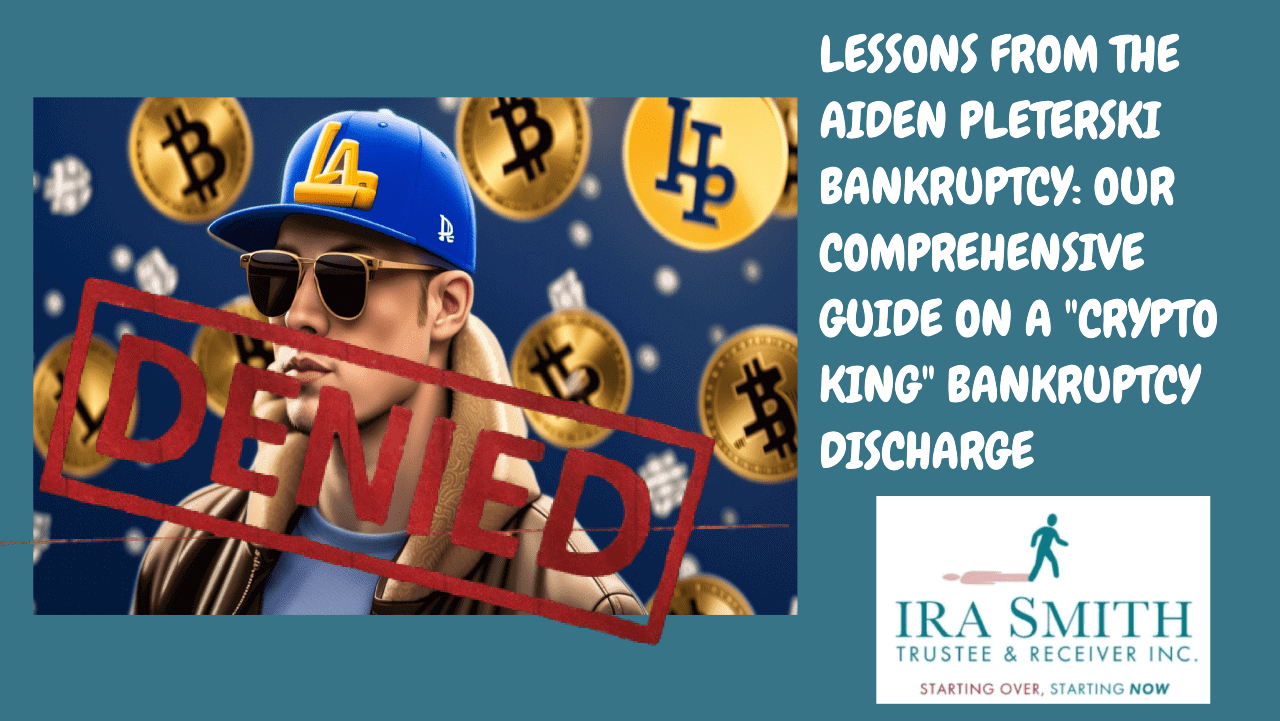
The information provided in this Brandon’s Blog is intended for educational purposes only. It is not intended to constitute legal, financial, or professional advice. Readers are encouraged to seek professional advice regarding their specific situations. The content of this Brandon’s Blog should not be relied upon as a substitute for professional guidance or consultation. The author, Ira Smith Trustee & Receiver Inc. as well as any contributors to this Brandon’s Blog, do not assume any liability for any loss or damage resulting from reliance on the information provided herein.

